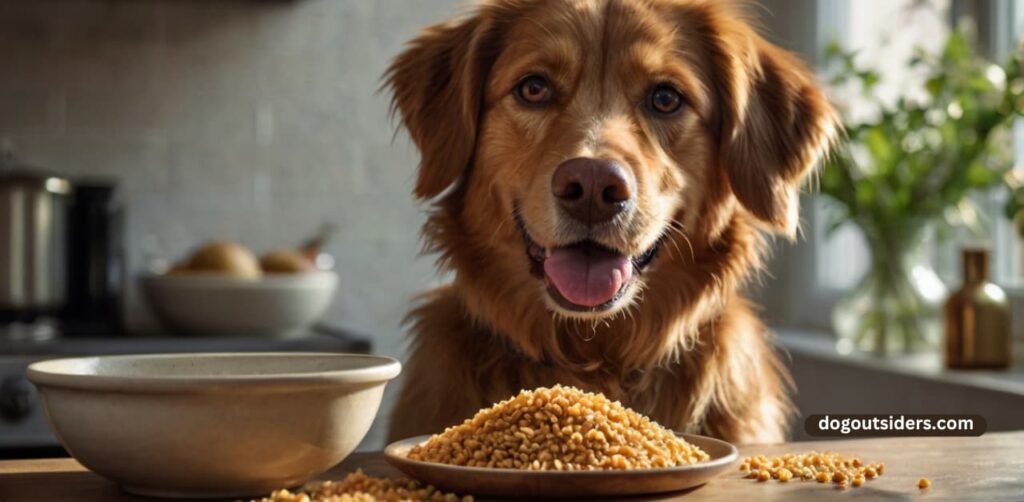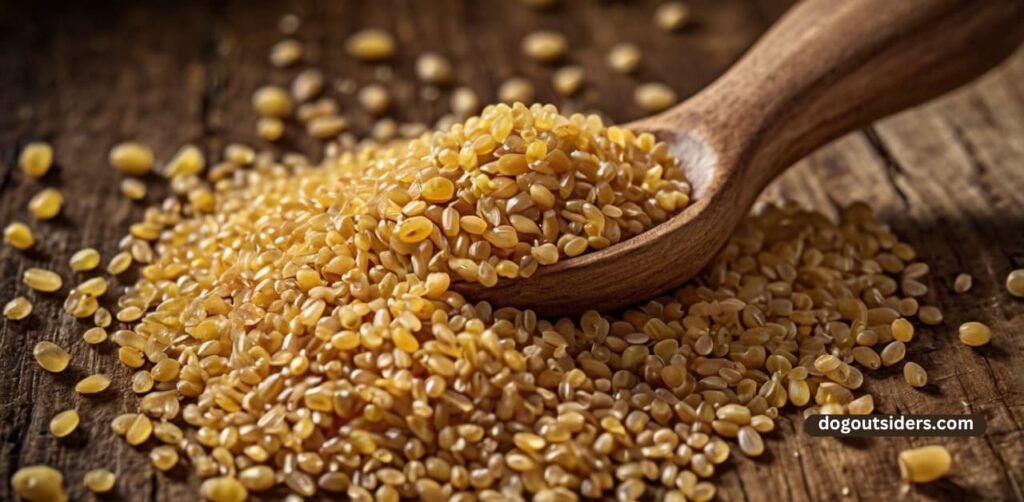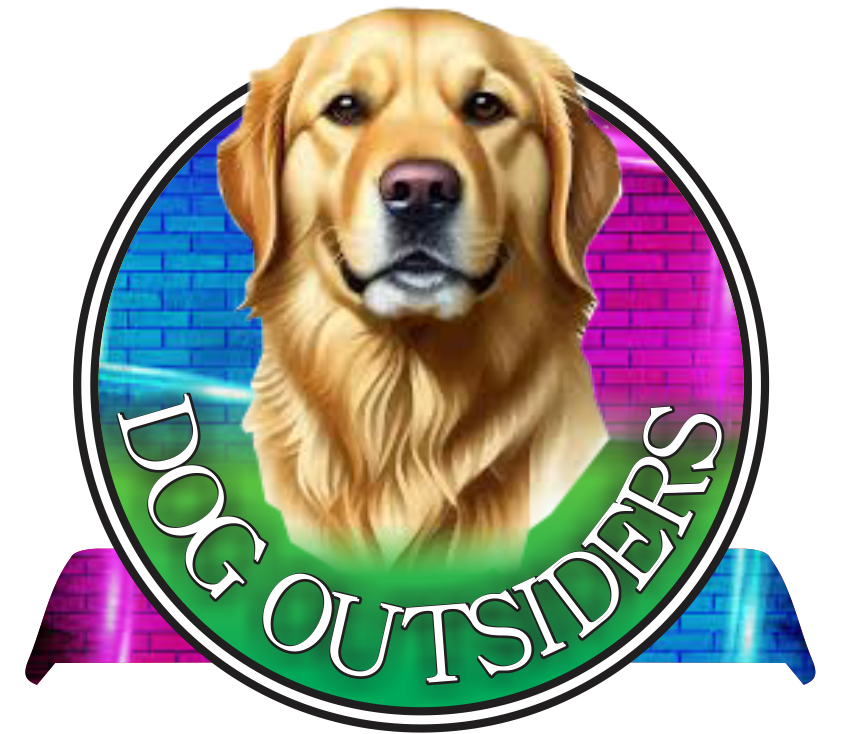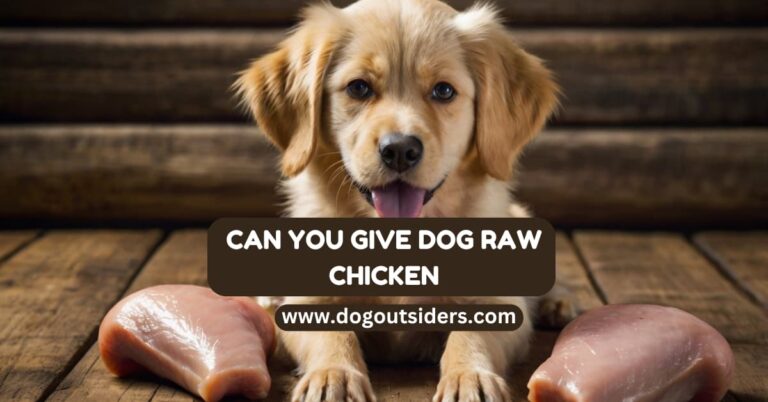I often wonder about what food dogs I can share with my dog to keep him happy and healthy. One food that comes up is bulgur. It’s a nutritious grain packed with benefits for humans, but can dogs eat bulgur too? While some foods are safe for us, they can be harmful to our furry friends’ dog stomachs, especially in dog diets lacking healthy ingredients dogs need and including harmful dog grains. It’s crucial to know the differences. In this post, I’ll explore whether bulgur, a healthy grain, is a good choice for dogs. I’ll break down the nutritional value of healthy grain and potential risks involved in the homemade dog food journey with dog bulgur and dry dog food. By the end, you’ll understand if adding bulgur, a healthy grain, to your dog’s diet is a smart move or one to skip. Let’s dive in and find out!
Key Takeaways
- Dogs can safely eat bulgur in moderation, but it’s important to introduce it gradually to avoid digestive issues.
- Bulgur is a nutritious grain that offers health benefits such as fiber and protein, which can support your dog’s overall health.
- Always consult with your veterinarian before adding new foods like bulgur to your dog’s diet, especially if they have existing health concerns.
- Be mindful of serving sizes; a small amount mixed with regular food is usually sufficient for dogs.
- Prepare bulgur properly by cooking it thoroughly and avoiding any added seasonings or ingredients that could be harmful to dogs.
- Consider creative ways to incorporate bulgur into dog treats, but ensure that it complements their balanced diet.
Understanding Bulgur

What is Bulgur?
Bulgur is a whole grain made from durum wheat semolina. It undergoes a cooking process that involves parboiling, drying, and then cracking the wheat into different sizes for dog foods. This method gives bulgur its unique texture and quick cooking time.
I remember the first time I cooked bulgur. The ease of preparation surprised me. Just boiling water and letting it sit for a few minutes was all it took.
Historical Significance
Bulgur has deep roots in Middle Eastern and Mediterranean cuisines. It has been a staple food for thousands of years. Many cultures use bulgur in various dishes, such as tabbouleh and kibbeh.
The history of bulgur dates back to ancient civilizations. Archaeological evidence shows that people have consumed it since at least 4000 BC. This rich history makes bulgur more than just a food; it’s part of many traditions.
Cooking Method
Bulgur differs from cracked wheat due to its unique cooking method. Cracked wheat is simply whole wheat kernels that have been cracked into smaller pieces. Unlike bulgur, it does not undergo parboiling.
For bulgur, the parboiling process partially cooks the grain before it is dried and cracked. This allows bulgur to cook faster than most grains. It typically takes about 10 to 15 minutes to prepare.
I often choose bulgur for my meals because of this convenience. It fits well into my busy schedule while providing healthy nutrients.
Nutritional Benefits
Bulgur offers many health benefits. It is high in fiber, which aids digestion and helps maintain heart health. Its low glycemic index makes it suitable for those watching their blood sugar levels.
Including plain bulgur in meals can be a great way to add whole grains to your diet. It’s versatile and can be used in salads, soups, or as a side dish.
Bulgur also contains essential vitamins and minerals such as iron, magnesium, and B vitamins. These nutrients support overall health and well-being.
Bulgur’s Nutritional Profile

Key Nutrients
Bulgur is a nutrient-rich grain. It contains several important nutrients. Fiber is one of its standout features. One cup of cooked bulgur has about 8 grams of fiber. This amount helps support digestive health. It can keep you feeling full longer, which I find helpful for managing my appetite.
Bulgur also provides protein. Each serving offers around 6 grams of protein. This makes it a good source for those who want to increase their protein intake without consuming meat. Bulgur contains vitamins and minerals such as magnesium, iron, and B vitamins. These nutrients play vital roles in energy production and overall health.
Digestive Health Benefits
The high fiber content in bulgur significantly benefits digestive health. Fiber aids in regular bowel movements and prevents constipation. I have noticed that including more fiber in my diet has improved my digestion over time.
Moreover, fiber can help maintain healthy cholesterol levels. It may also lower the risk of heart disease. Eating bulgur regularly can be a simple way to boost fiber intake. This is essential for anyone looking to improve their gut health.
Comparison with Other Grains
Bulgur stands out when compared to other grains like rice or quinoa. It is generally lower in calories but higher in fiber. For example, one cup of cooked white rice has about 0.6 grams of fiber, while quinoa offers around 5 grams per cup.
Bulgur’s nutritional profile makes it a better choice for many people. It provides more nutrients per serving than some popular grains. Some might prefer bulgur because it cooks quickly and has a pleasant nutty flavor.
People with wheat allergies should avoid bulgur since it is made from durum wheat. However, for those who are not allergic, bulgur can be an excellent addition to meals.
Practical Uses
You can use bulgur in various dishes. It works well in salads, soups, and as a side dish. I often use it in tabbouleh, a refreshing salad that combines bulgur with fresh vegetables and herbs.
Incorporating bulgur into your diet can provide numerous health benefits. Its high fiber content supports digestion while delivering essential nutrients.
Is Bulgur Safe for Dogs

Safety Confirmation
Bulgur is generally safe for dogs when given in moderation. It offers some nutritional benefits, including fiber and protein. These nutrients can be helpful for your dog’s digestion and overall health. I often consider adding new foods to my dog’s diet, and bulgur seems like a good option.
Feeding bulgur should be done carefully. Start with a small amount to see how your dog reacts. Each dog is different. Some might have sensitive stomachs or allergies. It’s essential to monitor their behavior after eating it. If any signs of discomfort appear, stop feeding it immediately.
Monitoring Reactions
After introducing bulgur into your dog’s meals, watch for any adverse reactions. Symptoms may include vomiting, diarrhea, or lethargy. If you notice these signs, consult a veterinarian right away. They can provide guidance specific to your dog’s needs.
I remember the first time I tried a new food with my dog. He loved it at first but then got an upset stomach. It taught me the importance of watching closely for any changes.
Consultation Recommendation
Before adding bulgur to your dog’s diet, consulting a veterinarian is wise. They can offer advice tailored to your dog’s health status and dietary needs. A vet can also help determine the right serving size based on your dog’s weight and activity level.
It’s always better to be cautious when making dietary changes. My vet recommended introducing new foods gradually, which has worked well for me. By doing this, I ensure my dog enjoys his meals without any issues.
Serving Size Consideration
When serving bulgur, consider your dog’s size and daily calorie intake. Smaller dogs need less food than larger ones. A general guideline is to keep the portion small—around one tablespoon per day for smaller breeds.
For larger dogs, you might increase that amount slightly but still keep it moderate. Too much bulgur can lead to digestive problems or unwanted weight gain.
Health Benefits for Dogs
Weight Management
Bulgur can play a role in weight management for overweight dogs. It is low in calories yet high in fiber. This combination helps dogs feel full without consuming too many calories. I have seen my own dog maintain a healthy weight by incorporating bulgur into his meals.
When dogs eat bulgur, they may consume fewer high-calorie treats. Many pet owners struggle with their dog’s weight. Bulgur provides a healthier alternative to traditional dog foods that are often high in fat and sugar.
Digestive Health
Fiber is essential for improving digestive health in dogs. Bulgur contains a significant amount of fiber, which aids digestion. This can help prevent issues like constipation and diarrhea. My dog used to have digestive problems, but adding bulgur helped regulate his stomach.
A diet rich in fiber promotes regular bowel movements. It also supports the growth of healthy gut bacteria. These factors contribute to overall digestive wellness. Including bulgur as part of a dog’s food can lead to better digestion and nutrient absorption.
Balanced Nutrition
Balanced nutrition is crucial for dogs’ overall health. Bulgur complements a dog’s diet by providing essential nutrients. It contains vitamins and minerals that support various bodily functions. For example, it offers B vitamins, which are important for energy metabolism.
Many commercial dog foods lack certain nutrients. By adding bulgur, pet owners can enhance their dog’s meals with healthy ingredients. This addition can lead to improved energy levels and overall vitality.
Homemade dog food journeys often include grains like bulgur as a staple ingredient. I have found that using bulgur in homemade dog treats has made my dog happier and healthier. It is important to ensure that any grain added fits well with your dog’s specific dietary needs.
Risks and Concerns
Gluten Sensitivity
Gluten can be a risk for some dogs. Dogs with gluten sensitivities or allergies may react negatively to bulgur. This grain contains gluten, which is safe for most dogs but harmful to others. I learned that gluten intolerance in dogs can lead to various health issues.
Symptoms of Intolerance
Symptoms of gluten intolerance in dogs often include digestive problems. Signs may be diarrhea, vomiting, or bloating. Some dogs might show skin reactions like itching or redness. If your dog eats bulgur and shows these symptoms, it’s important to take note. I once had a friend whose dog experienced similar issues after eating a new grain. It was alarming to see how quickly the symptoms appeared.
Seeking Veterinary Advice
If any adverse reactions occur, contact a veterinarian immediately. They can provide guidance on whether bulgur is suitable for your dog. It’s crucial not to ignore signs of discomfort. Early intervention can prevent more serious health issues down the line. Keeping an eye on your dog’s behavior after introducing new foods is essential.
Questions About Bulgur
Many pet owners have questions about feeding their dogs bulgur. They wonder if it’s safe and what risks are involved. Researching articles and reliable information helps clarify these doubts. It’s always better to err on the side of caution when introducing new grains into a dog’s diet.
Allergies and Reactions
Allergies can also play a role in how dogs react to bulgur. Some dogs may develop allergies over time, even if they previously tolerated certain foods well. I’ve read that introducing new foods gradually can help monitor any potential reactions. Watching for changes in behavior or health after feeding new items is key.
Appropriate Serving Sizes
Serving Guidelines
Serving sizes of bulgur depend on a dog’s size and dietary needs. Small dogs may only need 1 to 2 tablespoons of cooked bulgur per meal. Medium-sized dogs can handle about ¼ to ½ cup. Large dogs might eat up to 1 cup. These amounts offer a nutritious meal without overwhelming their digestive systems.
I often use bulgur as a healthy grain option for my dog. It provides friendly ingredients that support overall health. I find that measuring out these portions helps me avoid overfeeding.
Gradual Introduction
Introducing bulgur should be gradual. Start with small amounts mixed into their regular food. This approach helps prevent gastrointestinal upset, which can occur if dogs suddenly change diets.
Adding too much too quickly can lead to discomfort or diarrhea. I learned this the hard way when I switched my dog’s diet abruptly. A slow introduction allows their digestive system to adjust properly.
Monitoring Response
Monitoring a dog’s response to bulgur is crucial. Watch for any signs of allergies or digestive issues. If your dog shows discomfort, reduce the serving size or stop feeding it altogether.
Adjusting the amount based on their reaction is important. Some dogs may thrive on bulgur while others might not tolerate it well. Keeping an eye on their weight also matters. I keep track of my dog’s weight regularly to ensure he stays healthy.
Nutritional Benefits
Bulgur is a whole grain packed with nutrients. It contains fiber, vitamins, and minerals that contribute positively to a dog’s diet. Whole grains like bulgur can be a healthy addition when served in moderation.
I often mix bulgur with other safe grains like brown rice or quinoa for variety. This combination creates a balanced meal filled with healthy ingredients.
Recipes Ideas
Including bulgur in homemade dog food recipes is easy. You can cook it and mix it with lean meats and vegetables for a complete meal. Here are some ideas:
- Bulgur with chicken and carrots
- Bulgur mixed with ground turkey and peas
- Bulgur added to beef stew for dogs
These recipes provide different grains and flavors that make meals exciting.
How to Prepare Bulgur
Cooking Method
Cooking bulgur is simple. Start with raw bulgur and rinse it under cold water. This removes any dirt or impurities. Use a pot for cooking. For every cup of bulgur, add two cups of water. Bring the water to a boil, then reduce the heat. Let it simmer for about 12-15 minutes until the grains are tender.
I find that using unsalted bulgur keeps it healthier for dogs. After cooking, let it cool before serving it to your pet. This ensures it’s safe and comfortable for them to eat.
Avoid Added Ingredients
When preparing bulgur for dogs, avoid adding salt, spices, or oils. These ingredients can be harmful to dogs. Salt can lead to dehydration and other health issues. Spices might upset their stomachs. Oils can add unnecessary calories to their diet.
Keeping it plain is best. I always remember that my dog’s health comes first. Simple food is often the healthiest option.
Serving Bulgur
Use plain, cooked bulgur as a supplement to regular dog food. It can provide additional fiber and nutrients. Mix a small amount into your dog’s usual meals. This can help with digestion and overall health.
Start with small servings to see how your dog reacts. A couple of tablespoons mixed in should be enough at first. Monitor for any signs of discomfort or allergies after introducing it.
Bulgur can be a nutritious addition if served correctly. My experience shows that many dogs enjoy its texture and taste when prepared properly.
Bulgur Treat Ideas
Simple Recipes
Bulgur can make a great base for homemade dog treats. I often use it in my own recipes. One simple recipe involves mixing cooked bulgur with peanut butter and pumpkin puree.
- Cook one cup of bulgur according to package instructions.
- In a bowl, combine the cooked bulgur with half a cup of peanut butter and half a cup of pumpkin puree.
- Form small balls or flatten into cookie shapes.
- Bake at 350°F for about 20 minutes.
These treats are not only tasty but also nutritious.
Mixing Ingredients
Mixing bulgur with other dog-friendly ingredients adds variety to your dog’s diet. Consider using oatmeal or cracked wheat alongside bulgur. Both are safe and healthy options.
For example, you can create a mix by combining equal parts of bulgur and oatmeal. Add mashed banana or shredded carrots for extra flavor. This combination provides fiber and vitamins for your dog.
Creative Treats
Get creative when treating your dog with bulgur! Experimenting with flavors can lead to exciting results. I enjoy trying different combinations to see what my dog likes best.
Try adding chopped apples or blueberries to the bulgur mixture. You could also use chicken broth instead of water when cooking bulgur for added taste. Just ensure all ingredients are safe for dogs.
Safety First
Always prioritize safety when making treats. Not all human foods are suitable for dogs. Avoid ingredients like chocolate, grapes, and onions.
Before introducing new treats, consult your vet if you’re unsure about certain ingredients. Keeping your furry friend healthy is crucial.
Storage Tips
Store homemade bulgur treats properly to maintain freshness. Place them in an airtight container in the fridge. They can last up to two weeks this way.
I find that freezing some treats helps keep them fresh longer. Just take out a few at a time for quick snacks.
Conclusion:
I’ve explored the ins and outs of bulgur for dogs. It’s packed with nutrients and can be a healthy addition to their diet. However, moderation is key. I’ve highlighted the benefits, risks, and how to serve it safely. Always keep an eye on how your pup reacts to new foods.
If you’re thinking about adding bulgur to your dog’s meals, start small and watch for any reactions. It’s a great way to mix things up in their diet. Remember, consulting your vet is always a smart move. Let’s keep our furry friends happy and healthy! Try out those bulgur treat ideas and see how your dog enjoys them.
Frequently Asked Questions
Yes, dogs can eat bulgur in moderation. It is a nutritious grain that provides fiber and essential nutrients.
Bulgur offers several benefits, including improved digestion, energy boost, and a healthy coat due to its nutrient content.
Feeding too much bulgur can lead to digestive issues like bloating. Always introduce new foods gradually.
Cook bulgur in water without added salt or spices. Let it cool before serving to your dog.
Puppies can eat bulgur but consult your vet first. Their digestive systems are sensitive and require specific nutrition.
Yes, alternatives like quinoa, brown rice, or oats provide similar nutritional benefits and can be good options.







2 Comments